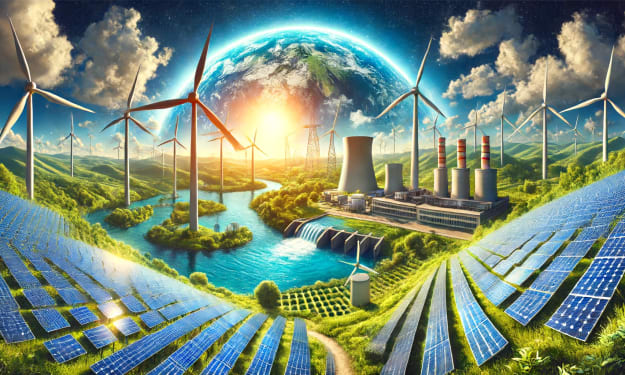Unseen Victims
The Impact of Climate Change on Indigenous Communities

Introduction
Climate change is not just an environmental crisis; it is also a profound social justice issue, with its effects disproportionately affecting vulnerable communities. Among the most affected are the indigenous communities around the world, who have long been stewards of the land and custodians of traditional knowledge. This article explores the unseen victims of climate change – the indigenous communities – and sheds light on the unique challenges they face. From loss of ancestral lands to disrupted livelihoods and cultural erosion, the impacts of climate change on these communities are far-reaching and demand urgent attention.
Deep Ties to the Land
Indigenous communities have a deep spiritual and cultural connection to their ancestral lands. For generations, they have thrived in harmony with nature, relying on traditional knowledge and sustainable practices. However, climate change is rapidly altering their landscapes. Rising temperatures, changing precipitation patterns, and increased frequency of extreme weather events threaten their ability to maintain their way of life. Loss of hunting and fishing grounds, decreased availability of medicinal plants, and disruptions in traditional agriculture destabilize indigenous communities, leading to food insecurity and loss of cultural identity.
Displacement and Loss of Ancestral Land
As sea levels rise and extreme weather events intensify, indigenous communities living in coastal areas are at great risk of displacement. These communities, often marginalized and lacking political power, are forced to abandon their homes and ancestral lands due to flooding, erosion, and saltwater intrusion. The loss of these lands not only disrupts their physical and spiritual connection to their heritage but also exposes them to social and economic vulnerability as they are often relocated to unfamiliar territories.
Environmental Injustice
Environmental injustice stems from a complex interplay of social, economic, and political factors. Historically, marginalized communities have been subjected to discriminatory practices that result in the siting of polluting industries, waste facilities, and other environmental hazards in their neighborhoods. This phenomenon, known as environmental racism, reflects deep-rooted patterns of structural racism and unequal power dynamics.
The consequences of environmental injustice are far-reaching and profound. Marginalized communities often experience a higher prevalence of health issues, including respiratory problems, cancer, and other illnesses linked to exposure to pollution and toxic substances. Lack of access to clean air, water, and healthy food exacerbates existing health disparities, contributing to higher rates of chronic diseases and reduced life expectancy.
Moreover, environmental injustice perpetuates socioeconomic disparities. Polluted and degraded environments in marginalized communities can hinder economic development, limit job opportunities, and decrease property values. This further deepens the cycle of poverty and prevents these communities from escaping the burdens they face.
Environmental injustice also intersects with other social justice issues. For example, indigenous communities and tribal nations often experience the loss of sacred sites and disruption of cultural practices due to environmental degradation and resource extraction. Women, children, and vulnerable populations are particularly susceptible to the adverse effects of environmental injustice, as they may face multiple layers of discrimination and vulnerability.
Addressing environmental injustice requires recognizing and rectifying the systemic inequities embedded in policies, regulations, and decision-making processes. It involves empowering marginalized communities by including them in environmental planning, policy development, and resource allocation. Environmental justice movements advocate for the fair and equal distribution of environmental benefits and the reduction of environmental burdens in these communities.
Policy interventions, such as stronger environmental regulations, improved enforcement, and equitable access to environmental resources, are essential. Additionally, investing in renewable energy, sustainable transportation, and green infrastructure in marginalized communities can promote both environmental and social justice.
Indigenous communities bear the brunt of environmental injustice as they face the consequences of climate change. Their lands are frequently targeted for resource extraction, deforestation, and industrial development, exacerbating the impacts of climate change. Disproportionate exposure to pollution, loss of access to clean water, and degradation of traditional territories compound the challenges these communities face. Limited resources and lack of representation further perpetuate the cycle of environmental injustice, leaving indigenous communities without a voice in decision-making processes that directly affect their lives.
Cultural Erosion and Traditional Knowledge
The impacts of climate change not only threaten the physical well-being of indigenous communities but also erode their rich cultural heritage. Traditional knowledge, passed down through generations, is intricately intertwined with the natural world. Climate change disrupts the seasonal patterns and ecological balance that this knowledge is built upon, rendering it less effective in predicting weather, managing resources, and adapting to change. As indigenous communities struggle to maintain their livelihoods and cope with rapid environmental shifts, there is a risk of losing invaluable knowledge, customs, languages, and spiritual practices, with far-reaching consequences for humanity as a whole.
Conclusion
The impact of climate change on indigenous communities is a grave concern that demands immediate action. Preserving and respecting indigenous rights, supporting their sustainable practices, and including their voices in decision-making processes are crucial steps toward mitigating the impact of climate change. Collaborative efforts that combine traditional knowledge with scientific advancements can pave the way for innovative solutions. By addressing the systemic inequalities that contribute to environmental injustice and ensuring the inclusion and empowerment of indigenous communities, we can work towards a more equitable and sustainable future, where the unseen victims of climate change are recognized, protected, and given the opportunity to thrive.
About the Creator
Enjoyed the story? Support the Creator.
Subscribe for free to receive all their stories in your feed. You could also pledge your support or give them a one-off tip, letting them know you appreciate their work.





Comments
There are no comments for this story
Be the first to respond and start the conversation.